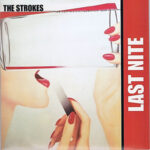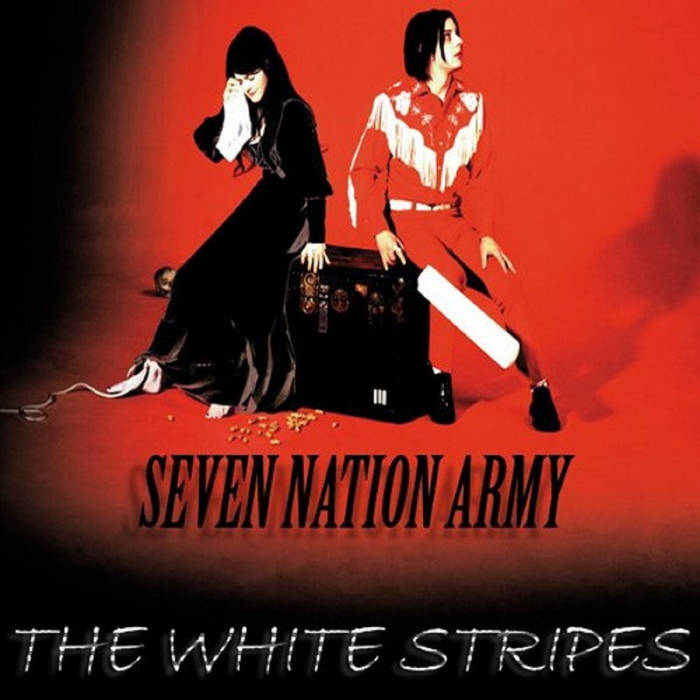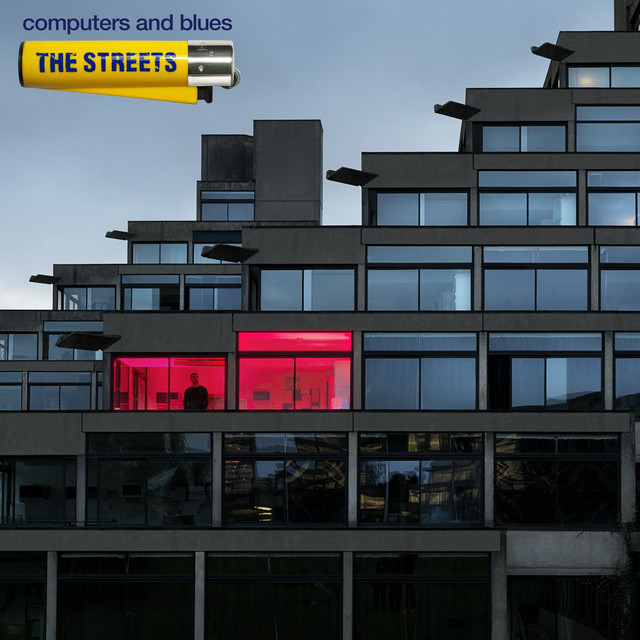 The year 2001 marked a turning point in the history of rock music. Amidst the lingering echoes of ’90s alternative and the polished sheen of mainstream pop, a raw, electrifying sound emerged from New York City: The Strokes. With their debut single “Last Nite,” the band reignited the spirit of garage rock, merging retro influences with contemporary angst and attitude. More than a hit song, “Last Nite” became a cultural touchstone that defined a generation of music fans and reshaped the landscape of early-2000s indie rock.
The year 2001 marked a turning point in the history of rock music. Amidst the lingering echoes of ’90s alternative and the polished sheen of mainstream pop, a raw, electrifying sound emerged from New York City: The Strokes. With their debut single “Last Nite,” the band reignited the spirit of garage rock, merging retro influences with contemporary angst and attitude. More than a hit song, “Last Nite” became a cultural touchstone that defined a generation of music fans and reshaped the landscape of early-2000s indie rock.
The Birth of a Sound
The Strokes’ rise was the culmination of years of musical experimentation and camaraderie in New York’s Lower East Side. Julian Casablancas, the band’s enigmatic frontman, alongside guitarist Nick Valensi, guitarist Albert Hammond Jr., bassist Nikolai Fraiture, and drummer Fabrizio Moretti, had spent years honing a sound that was simultaneously nostalgic and forward-looking. They drew inspiration from classic rock acts like The Velvet Underground, The Stooges, and Television, blending the gritty textures of the 1970s with the immediacy and rebellion of punk.
“Last Nite,” written by Casablancas, was the perfect introduction to this sound. The song opens with a jagged, punchy guitar riff—instantly recognizable, immediately captivating. It’s a riff that harks back to the stripped-down rock of decades past, but with a modern swagger that announces The Strokes as something entirely new. The song’s driving rhythm, tight drums, and Casablancas’ distinctive vocal delivery establish a sense of urgency, mirroring the restless energy of youth and city life.
Lyrics that Capture a Generation
Lyrically, “Last Nite” embodies the contradictions of early-21st-century youth: self-assured yet uncertain, casual yet emotionally resonant. The chorus—“Last night, she said / Oh, baby, I feel so down / Oh, it turns me off / When I feel left out”—captures feelings of alienation, desire, and relational tension with striking economy. Casablancas’ phrasing, occasionally laconic and detached, conveys a vulnerability that feels authentic rather than performative.
This approach to lyrics resonated with listeners because it mirrored their own experiences of life, love, and social navigation. The song isn’t overly complicated, but its simplicity is deceptive; the emotional undertones run deep, offering a sense of identification for anyone navigating the uncertainty of youth or the complexities of relationships.
The Garage Rock Revival
“Last Nite” didn’t emerge in a vacuum—it was part of a broader garage rock revival that swept the early 2000s. At a time when pop-punk bands and boy bands dominated the charts, The Strokes reintroduced raw instrumentation, stripped-down arrangements, and a lo-fi aesthetic that felt rebellious by contrast.
The song’s production, handled by Gordon Raphael, embraced imperfection. Slightly rough guitar tones, minimal overdubs, and a naturalistic drum sound gave the track an immediacy and energy often absent from the highly polished recordings of the era. This aesthetic choice helped distinguish The Strokes from their contemporaries and contributed to the sense that “Last Nite” was not just music—it was an attitude, a lifestyle, and a statement of intent.
“Last Nite” became a blueprint for countless bands that followed, from The White Stripes to Arctic Monkeys. Its influence is evident in the resurgence of guitar-driven rock in the early 2000s, as well as in the indie scene’s embrace of raw authenticity over studio perfection.
Visual Identity and Cultural Impact
The release of “Last Nite” was accompanied by a music video that further cemented The Strokes’ aesthetic and ethos. Shot in a dimly lit club with the band performing directly to the camera, the video emphasized performance over spectacle. Julian Casablancas’ nonchalant presence, coupled with the band’s understated style—leather jackets, slim jeans, and a casual coolness—communicated a sense of authenticity and accessibility. Fans weren’t just listening to The Strokes; they were seeing a reflection of themselves in the band’s image and approach.
Beyond music television, “Last Nite” permeated cultural consciousness in other ways. The song became a staple on college radio, independent record stores, and early internet music communities, further spreading The Strokes’ influence among young, engaged listeners. Its impact extended beyond music into fashion, attitude, and urban culture, helping to define the zeitgeist of New York City’s early-2000s indie scene.
The Role of Julian Casablancas
Central to the song’s resonance is Julian Casablancas’ vocal performance. His voice carries a mix of detachment, charisma, and vulnerability. Unlike the bombastic vocal styles of many rock contemporaries, Casablancas’ delivery feels conversational, almost offhand—but precisely because of that, it feels real.
Casablancas’ phrasing and tone convey emotion without overt dramatization. His slightly slurred, relaxed enunciation in the verses creates a sense of intimacy, as if he’s confiding directly to the listener. In contrast, the chorus opens up emotionally, allowing the raw feeling behind the words to emerge. This dynamic performance transforms what could have been a simple rock track into a profound emotional statement, giving “Last Nite” its enduring appeal.
Musical Structure and Appeal
Musically, “Last Nite” is deceptively simple, but its power lies in the precision of its construction. The song follows a traditional verse-chorus-verse format, yet each element is crafted to maximize impact. The guitar riff is infectious, setting the tonal and emotional landscape from the very first note. The bassline provides a driving undercurrent, while the drums maintain an energetic pulse that propels the track forward.
The song’s simplicity allows listeners to focus on its emotional core. There are no flashy solos or convoluted arrangements; instead, every note and rhythm serves the song’s narrative and mood. This restrained approach is a hallmark of The Strokes’ early work and a key reason “Last Nite” continues to resonate nearly two decades after its release.
Influence on Indie and Rock Music
“Last Nite” is widely credited with catalyzing a wave of guitar-centric indie rock that dominated the early 2000s. Bands like The Killers, Franz Ferdinand, and Interpol drew inspiration from its garage rock ethos, its melodic simplicity, and its urban cool. The song demonstrated that it was possible to achieve commercial success without sacrificing authenticity—a lesson that influenced countless artists navigating the tension between artistic integrity and mainstream appeal.
The song also helped popularize the New York indie scene internationally. Before “Last Nite,” bands like The Strokes were primarily local phenomena, performing in small venues across Manhattan and Brooklyn. The success of the single—and the subsequent album Is This It—brought global attention to the city’s underground music scene, influencing both American and international audiences and reshaping perceptions of urban music culture.
Cultural Relevance in the 21st Century
Over time, “Last Nite” has proven remarkably durable, maintaining relevance in both music and broader culture. It is frequently cited in “best of” lists, covered by emerging bands, and featured in films, commercials, and television shows. The song’s energy, attitude, and emotional resonance continue to resonate with new generations of listeners, illustrating the timeless appeal of its blend of nostalgia, rebellion, and authenticity.
The song has also become a touchstone for discussions about early-2000s music culture. It represents a moment when indie rock reclaimed space in the mainstream, offering an alternative to the slick, produced pop and post-grunge rock that dominated the charts. It’s remembered as a declaration of independence, a manifesto for anyone seeking authenticity in music.
The Legacy of Last Nite
The legacy of “Last Nite” extends beyond its commercial success. It helped redefine the possibilities for rock music in the 21st century, proving that raw energy and emotional honesty could resonate on a massive scale. The song solidified The Strokes’ status as one of the most influential bands of the era, shaping the sound and aesthetic of countless indie and alternative acts that followed.
Its influence is evident in both recorded music and live performance. Bands continue to emulate the song’s stripped-down arrangements, tight guitar interplay, and direct emotional expression. The success of Is This It, fueled by the impact of “Last Nite,” inspired a wave of artists to pursue authenticity over polish, changing the trajectory of indie rock for years to come.
Why ‘Last Nite’ Endures
What makes “Last Nite” endure is its combination of accessibility, attitude, and emotional resonance. It is a song that feels immediate, as if it was written and performed in a single burst of creative energy, yet it is meticulously crafted. Listeners can identify with its themes of relational tension, urban ennui, and youthful rebellion, while simultaneously appreciating the craftsmanship behind the music.
The song also carries a sense of place and moment. The Strokes’ New York roots infuse “Last Nite” with a specific energy—the tension, excitement, and raw edge of city life. This urban authenticity gives the song a texture and atmosphere that resonates with anyone who has experienced the rush of city living or the thrill of youthful defiance.
Conclusion: A Song That Defined an Era
“Last Nite” is more than just a single—it is a milestone in modern rock history. Its blend of retro influences, modern sensibilities, and raw emotional power captured the spirit of early-2000s youth culture and helped define a new era of indie rock. Joe Casablancas’ distinctive vocals, the band’s tight musicianship, and the song’s unapologetic authenticity combined to create a track that continues to inspire and resonate.
Nearly two decades after its release, “Last Nite” retains its energy, attitude, and emotional potency. It remains a quintessential anthem for those seeking authenticity, excitement, and connection in music. The song is proof that even in an era dominated by production and polish, there is enduring power in raw expression, heartfelt performance, and the unpretentious joy of rock ‘n’ roll.
“Last Nite” is not just a song; it is a cultural moment, a statement of intent, and a legacy that continues to shape the sound of modern music. The Strokes proved that garage rock could thrive in the 21st century, and with this single, they reminded the world that music—at its core—is about passion, emotion, and connection.
“Last Nite” will forever remain a beacon of authenticity, energy, and the timeless appeal of raw, unapologetic rock.


